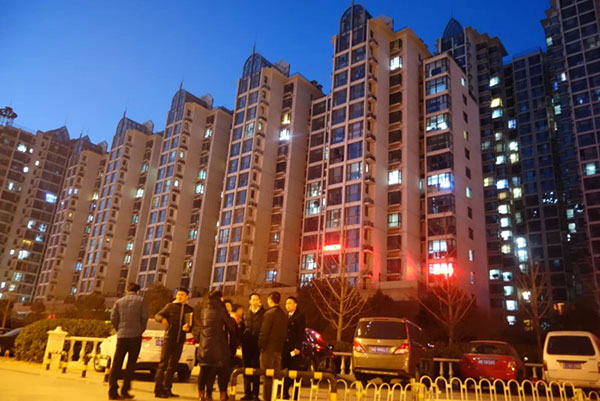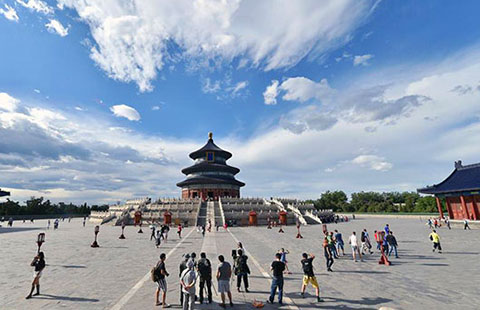China's future megalopolis gathers momentum as young people return
By Wu Yan and Liu Wei (chinadaily.com.cn) Updated: 2015-07-30 07:27 |
|
Real estate agents talk with potential clients at the entrance to a residential compound in Yanjiao, Hebei province, Jan 11, 2015. [Photo by Song Wei/chinadaily.com.cn] |
A Qinhuangdao local, surnamed Su, who worked for five years in Beijing following graduation, has bought an apartment in his hometown.
"Though Qinhuangdao offers less job opportunities and earnings than Beijing, I will come back as long as there is a favorable job here. Who wants to struggle one's life away from home?" he said.
With the construction of the cross-regional traffic network, a one-hour commuting circle is forming around Beijing, with Qinhuangdao just included.
Like Su, many people plan to settle in Qinhuangdao, a livable coastal city, and are purchasing property.
From the beginning of this year, house-buying groups from Beijing are made up of more and more young people, most of whom are Qinhuangdao natives who work in Beijing. They want to either live by themselves or give places to their parents, said a real estate agent, surnamed Liu.
"The situation is much different from several years ago. With the integrated development of the Beijing-Tianjin-Hebei region, many people's hometowns have new growth points and they are considering coming back to look for a job", said Liu.
In an encouraging sign, housing loan policies have paved a way for regional integration.
Qinhuangdao signed a deal in 2009 with Beijing allowing residents to use loans from Beijing authorities for buying a house in Qinhuangdao.
"Implementation of this housing loan deal benefits Qinhuangdao's geographical advantage with Beijing and the integrated development of the Beijing-Tianjin-Hebei region", said Huang Jingdi, head of credit and loan department of Qinhuangdao Housing Provident Fund Administration Center.
A total of 120 million yuan worth of loans in 470 payments were allocated from Beijing authorities for buying houses in Qinhuangdao as of February, according to the Qinhuangdao Housing Provident Fund Administration Center.
The guideline for the cooperative development of the Jing-Jin-Ji regions was passed in April with more detailed policies and plans in the pipeline.
According to the guideline, Beijing holds its position as a political, cultural, innovative and diplomatic center while Tianjin works as an experimental research hub for R&D, global shipping, finance and economic reform. Hebei is set for industry transformation and logistics.
The concept of the supercity needs strong infrastructure construction, especially transportation.
On July 20, the Beijing Municipal Commission of Transport announced its plan to upgrade existing road construction to a new level - connecting all main highways and the public railway network.
With the development of transportation among the three regions, people in the Jing-Jin-Ji region will be linked easily. The development of high-speed rail with the average speed of 240 to 300 km per hour makes it possible for people to commute between neighboring cities within an hour, which expands the people's living space.
Telecom carriers will scrap roaming fees for cross-district phone calls around the region including Beijing, Tianjing and Hebei province from Aug 1, according to a China National Radio report.
- Delegation salutes Tibet anniversary
- Officials are told to act as anti-graft watchdogs
- Great Wall safeguarded in united action
- Vice minister pledges more efforts to improve air quality
- Beijing’s efforts to control air pollution start to pay off
- China's military committed to reform
- Netizens rip singer over baby photos
- Central govt's growing support for Tibet
- Monument to be built on Tianjin blast site
- China and Russia seal raft of energy deals







